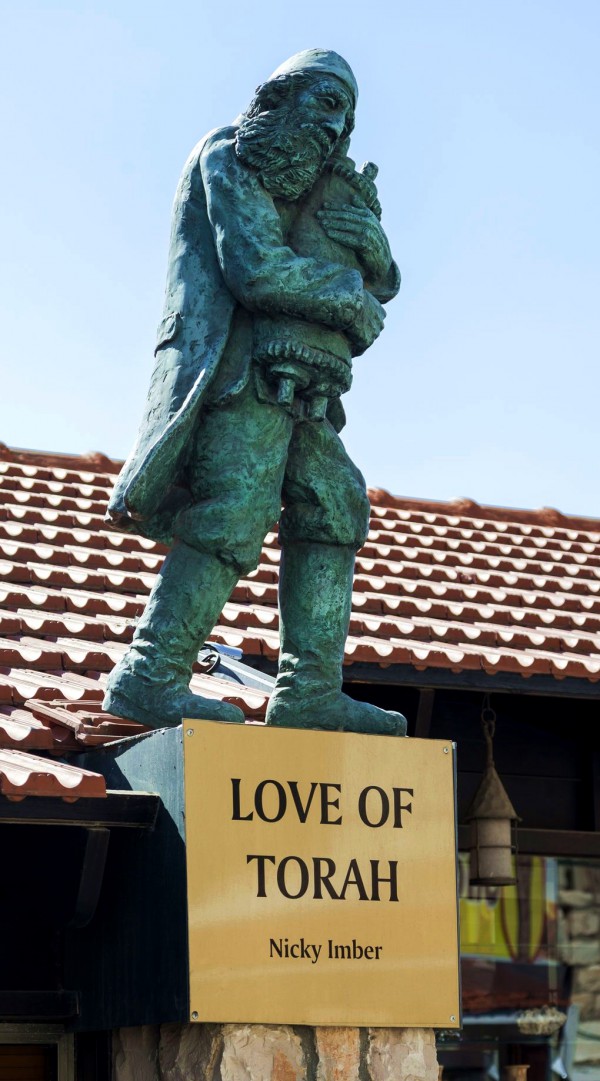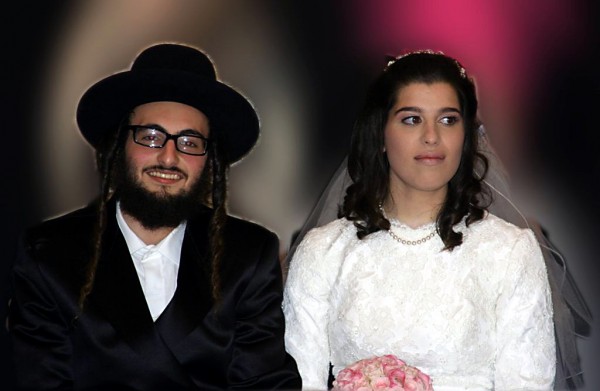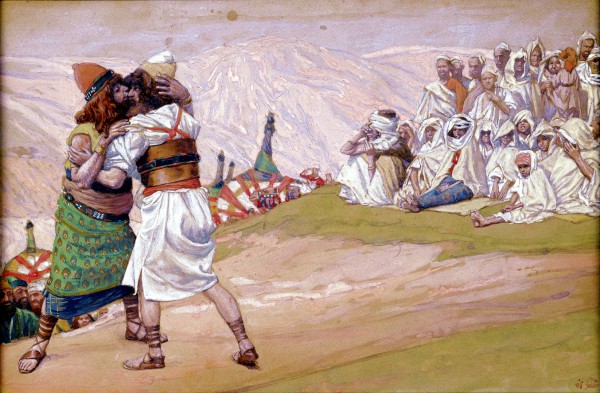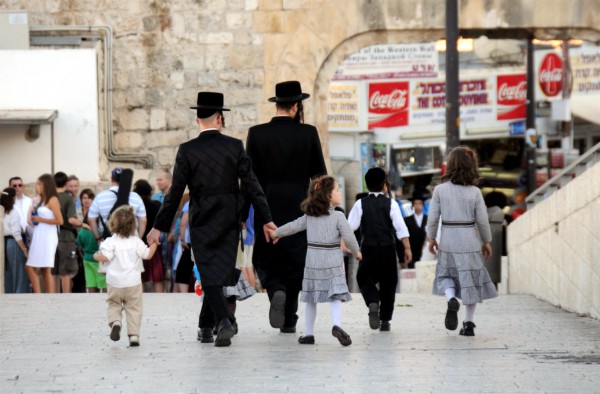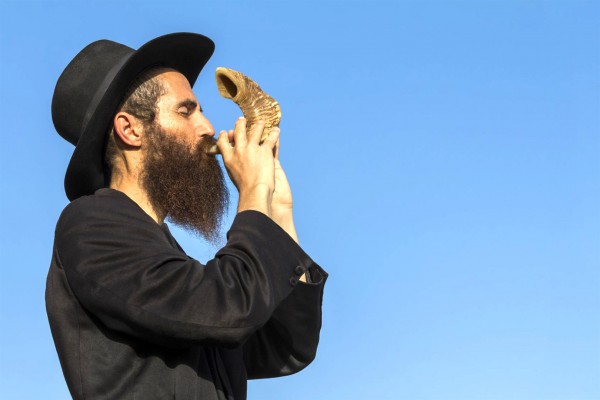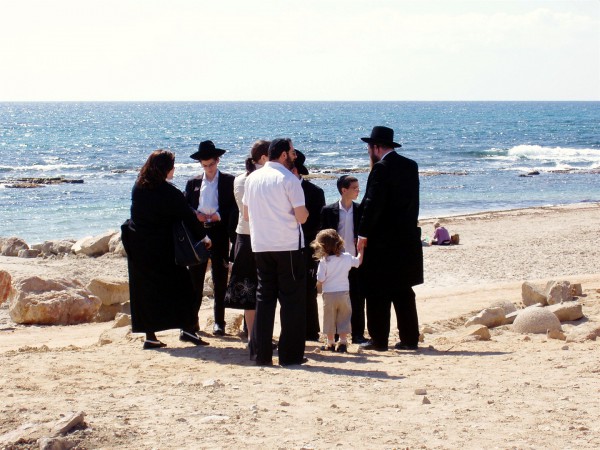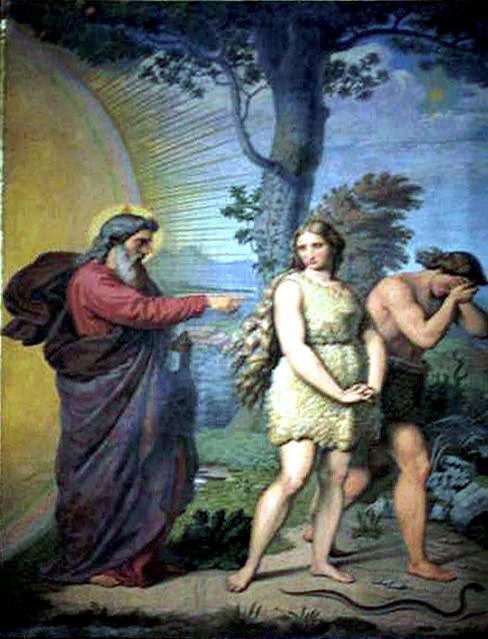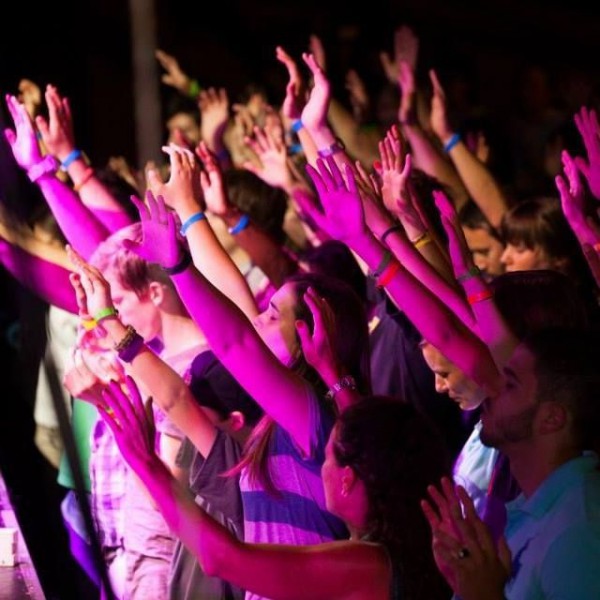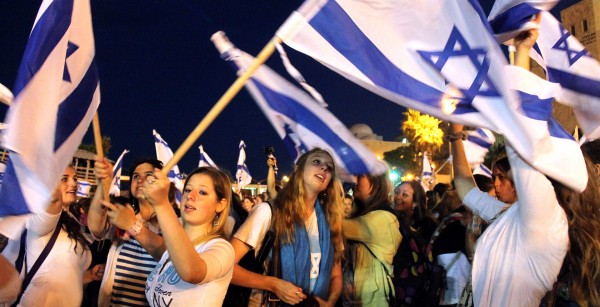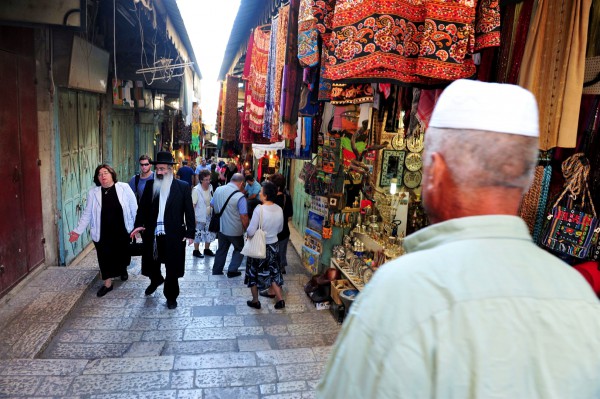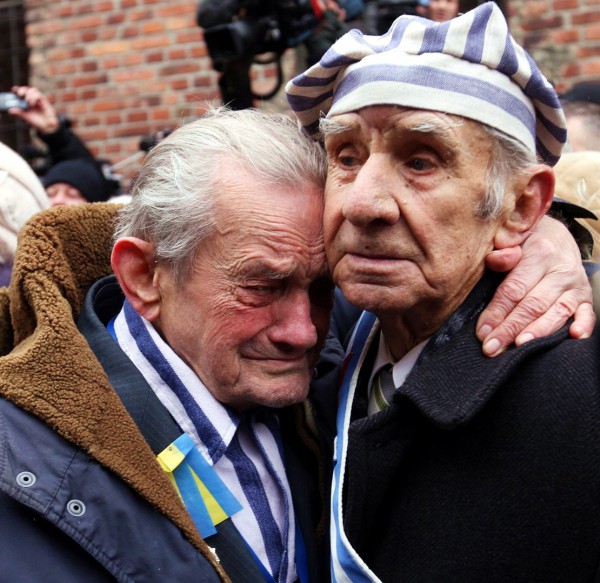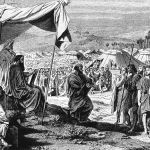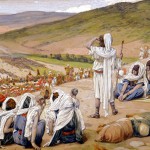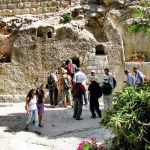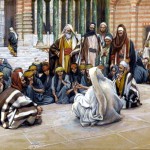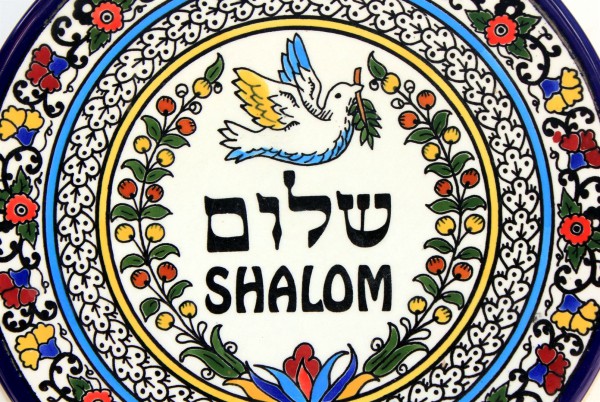
Decorative plate with the image of a dove carrying an olive branch and inscription “peace” (shalom) in Hebrew and English letters.
“All this is from God, who reconciled us to Himself through Messiah and gave us the ministry of reconciliation, that God was reconciling the world to Himself in Messiah , not counting people’s sins against them. And He has committed to us the message of reconciliation.” (2 Corinthians 5:18–19)
In 2 Corinthians 5:16–21, the apostle Paul tells Believers in Yeshua that they have been given the ministry of reconciliation (restoration to right standing and to favor). In just a few verses, the word reconciliation is repeated five times, underlining its importance.
This word expresses the heart and soul of our responsibility as Believers. It is not simply a strategy, but a lifestyle.
In fact, reconciliation is a profound tradition within Judaism and is arguably the key pillar of many Jewish values. Paul even points to the Hebrew Scriptures as a guidebook for reconciliation:
“Such things were written in the Scriptures long ago to teach us. And the Scriptures give us hope and encouragement as we wait patiently for God’s promises to be fulfilled.” (Romans 15:4)
At the beginning of chapter 15 of Paul’s letter to the Roman Believers, he compels the readers to please one another (not ourselves), building up others for their good. He uses a Greek word, areskó, that means to win favor or willingly serve.
This word carries a connotation of making peace or reconciling. It is rarely used in connection with ourselves but in connection to our relationship with one another. (Skip Moen)
Although the word “reconciliation” does not appear in the Torah (first five Books of the Bible), we see it modeled throughout the Tanakh (Old Testament). It is inextricably linked to shalom (peace) and peacemaking.
We are actually commanded in the Tanakh, “Seek peace and pursue it.” (Psalm 34:14)
And we are told in the Brit Chadashah (New Testament), “Blessed are the peacemakers, for they will be called children of God.” (Matthew 5:9)
What Is Peace?
In his book Torah of Reconciliation, Rabbi Lewis explains the connection between peace and God’s presence.
“Shalem, the root of the word shalom, connotes completeness, fullness. It has a rich inner texture that brings together such value-laden terms as blessing, life, goodness, kindness, compassion, justice, and learning. Most of all, shalom bears the promise of realizing God’s illuminating personal Presence.” (Lewis, p. 4, emphasis added)
And yet, shalom does not necessarily involve trust. As Skip Moen points out on his blog, though we are to make peace whenever possible, Scripture dictates that we place our confidence, our hope — our trust (batach) — in God.
Scripture only tells us once to place our batach in someone other than God: when we read that the Proverbs 31 kind of wife is worthy of a husband’s trust (batach) (v. 11).
By contrast, it is common in Scripture to be told not to place our confidence, trust, or to believe (aman) in anyone but God — not ourselves, not our riches, not even our closest friend (Micah 7:5; Psalm 41:9, 118:8–9, 141:3; Jeremiah 9:4; Lamentations 1:2; and in the Brit Chadashah: Mark 10:24; Luke 10:3–4; 2 Corinthians 1:9).
We can gain a firmer understanding of reconciliation and peace by seeing how they are pursued and won or lost by some key people in the Bible.
Esau and Jacob Reconcile
When God asked Jacob to return home after years of hiding from his brother, Esau, Jacob was “greatly afraid and distressed.” (Genesis 32:7(8))
Jewish tradition says that Jacob was not only afraid of being killed by his brother Esau, but of killing Esau himself.
The Talmud teaches, “If someone comes to kill you, arise and kill him first” (Sanhedrin 72a); nevertheless, Rabbinic tradition also dictates that whenever possible, it is better to be pursued than to be the pursuer, to be harmed than to be the one who harms, to make peace over war.
Therefore, in preparing to meet Esau, Jacob made three strategic moves:
- He split his camp into two, just in case Esau attacked — a strategy of survival.
- He cried out to God — a strategy of trust — reminding Him of His personal promise to Jacob: “I will surely do you good, and make your offspring as the sand of the sea, which cannot be numbered for multitude.” (Genesis 32:12)
- He bowed before Esau seven times — a strategy of humility — after presenting him with lavish gifts.
Rabbi Lewis tells us that in taking these steps toward reconciliation, “Jacob is the best example in Torah of personal transformation. He overcomes a deceitful past and grows into a mature man desirous of overcoming hatred. He is willing to take risks to create a new beginning of brotherhood with Esau. His hard work overcomes the pent-up hatred and anger which Esau surely harbored.” (Lewis, p. 87)
In a grand act of chesed (covenantal love and mercy), Esau, who perhaps had every fleshly right to continue hating his brother, embraced and kissed him as they both wept. (Genesis 33:4)
Joseph and His Brothers Reconcile
Joseph had the power, the opportunity, and many would say the right to avenge himself for the evil his brothers did to him many years earlier.
But Joseph matured in Godly wisdom.
When his brothers approached him asking for their very survival, Joseph, now second in command of Egypt, practiced a Jewish dictate that says “a dispute has no chazaka, no enduring status.”
In Jewish law, the legal status of chazaka is presumed to endure indefinitely (as in the status of a kohen or levi), but when it comes to personal relations, no matter how bitter an argument has become, “there is always an opening and an urgent need to seize that opening in repairing broken bonds with others.”
Therefore, “with the power vested in him, he [Joseph] was able to mastermind a compassionate new beginning” and restore his family’s unity. (Lewis, p. 94–95)
Jehu and the Ministry of Reconciliation
The prophet Elisha anointed King Jehu to reconcile Israel back to God.
The king recognized, however, that peace could not exist within Israel and especially between God and His people as long as they placed their trust in false gods and in evil people. He asked,
“What peace can there be, so long as the whorings and the sorceries of your mother Jezebel are so many?” (2 Kings 9:22)
Sadly, Jehu only partially cleansed the nation. He killed the false prophets of Baal and the evil Queen Jezebel who led Israel into such intense idolatry. He also shattered many of the statues that the people worshiped. Most importantly, however, the people’s hearts were not cleansed of their idolatrous desires.
Because the people only partially cleansed their hearts and practices, full peace and reconciliation with God was not restored, and Israel began to lose its battles and territories.
Reconciliation, Teshuvah, and Tikkun Olam
Reconciliation/ restoration is not only related to peace, it is connected to the Jewish values of teshuvah and tikkun olam.
Teshuvah is Hebrew for repentance and is based on the verb lashuv, which means to return.
The idea of tikkun olam (תיקון עולם / repairing the world) is a Jewish value directed toward doing good in order to bring about good results or to repair the damage that has been done by others. Although originally interpreted by Orthodox Judaism to mean the wiping out of all idolatry in the world, it later came to suggest acting in a way so as to benefit the world.
Teshuvah is of great importance to the Jewish People, especially during the High Holy Days, which include the Days of Awe (Ten Days of Repentance) between Rosh Hashanah (Tishrei 1) and Yom Kippur (Tishrei 10).
The entire month of Elul (the sixth month of the Biblical calendar) is set aside for teshuvah in preparation for these High Holy Days.
The medieval scholar Maimonides instructs us about teshuvah: “What is repentance? It consists in this, that the sinner abandon his sin, remove it from his thoughts, and resolve in his heart never to repeat it.”
Teshuvah is a turning toward both God and man. We understand that it is a five-step process:
- Recognition of our sins;
- Confessing our sins to those we have hurt and asking for forgiveness;
- Ceasing from the sin;
- Demonstrating remorse and regret for the sin;
- Resolving to live in a new way by refraining from the sin in the future. (John J. Parsons)
Yom Kippur itself is an annual ritual of reconciliation (or atonement) between the people and God. This day of reconciliation requires that the individual take responsibility for their part in personal conflicts.
Traditionally we cannot come before God in search of reconciliation when the sin that separates us from Him involves another person. We must first go and be reconciled with that person and then come to God. Of course, we see that same sentiment expressed in the Brit Chadashah:
“Therefore, if you are offering your gift at the altar and there remember that your brother or sister has something against you, leave your gift there in front of the altar. First go and be reconciled to them; then come and offer your gift.” (Matthew 5:23–24)
We should be quick to come to such reconciliation, but to do so means that one person must be the first to take personal responsibility for his or her own action. If not, there can be no movement toward reconciliation.
One example of this is a husband and wife who have become emotionally distant. Reconciliation begins when at least one of the warring couple stops playing the blame game and takes steps toward accepting responsibility for his or her own actions.
As in a marriage, we fail to achieve reconciliation with God when we play the blame game with Him.
“On Yom Kippur, we stand before God, hand on heart and say, ‘God: it’s not your fault. We take responsibility. We are not who we should be, so life is not what it could be. We are the problem in the relationship, not You.’”
It is only when we begin to take responsibility that reconciliation with God is possible, writes Rabbi Shaul Rosenblatt. (Aish)
Ministry of Reconciliation
Just as in Judaism, reconciliation is germane to Christianity. Drawing from Paul’s teaching in Second Corinthians, the great Christian minister and teacher, C. H. Spurgeon explained how God, through Messiah, has reconciled mankind to Himself after the “fall” of Adam and Eve.
In a sermon given in 1908 Spurgeon said,
“And, next, I again remind you that the reconciling work on God’s part is already done. He ‘has given to us the ministry of reconciliation,’ but He ‘reconciled us to Himself by Jesus Christ.’ When Jesus hung upon the Cross — when Jesus died — when Jesus rose again, everything was done that was necessary in order that God might be able to forgive the guilty and receive them to His bosom! Nothing can be added to Christ’s completed work, of which He said, ‘It is finished.’” (Spurgeon Gems)
In his Letter to the Ephesians, Paul also writes of the reconciliation between Gentile and Jew (2:12–20) by the breaking down of the wall of hostility between man and God:
“… remember that at that time you were separate from Messiah, excluded from citizenship in Israel and foreigners to the covenants of the promise, without hope and without God in the world.
“But now in Yeshua HaMashiach you who once were far away have been brought near by the blood of Mashiach. For He Himself is our peace, who has made the two groups one and has destroyed the barrier, the dividing wall of hostility.” (v. 12–14)
Arab Jewish Reconciliation Through Messiah
Situated in Jerusalem, the 24-hour prayer ministry Succat Hallel has gone a long way toward uniting Jewish and Arab Believers.
Many of these Arab Believers are from the Gaza Strip and the Palestinian Authority and have roots that go back to deep hostility toward Jews and the Jewish state.
Accepting Yeshua has created a fundamental change in their lives, which is exhibited each summer when the ministry holds one of its conference and outreaches.
At a conference it is common to see Arabs with Hamas backgrounds sharing their testimony of overcoming darkness by accepting the Jewish Messiah, and praying together with Jewish Believers, many of whom are still wearing their Israel Defense Forces (IDF) army uniforms. In fact, these Arab Believers are risking their lives simply by attending the conference.
But, sadly, such events are not necessarily the norm for Israeli society, as Israeli Jewish Believer Mati Shoshani wrote on the Musalha website.
In the article, Shoshani notes the precarious position of Jewish Believers in Israeli society in general and how they, and especially the younger generation, must work to see themselves accepted as cultural equals.
He says that most Messianic congregations in Israel do not focus on relationships with Arab Believers, focusing rather on what they perceive to be more pressing problems.
Most congregational leaders are overtaxed with work, fulfilling several congregational roles and do not have the time to receive training in such areas as reconciliation. He emphasizes that both sides must recognize the importance of this issue and that Believers should set an example for others in their own nations.
Shoshani contends that as younger generations of Believers become less pressured to prove their identities as Jews and as Israelis, there will be new opportunities to create bridges with the Arab believing community in Israel and Palestine.
Such reconciliation would be a testimony to other Arabs and Jews alike, showing that while political unity might not yet be possible, spiritual unity, peace, and reconciliation through Yeshua is.
Provocative Reconciliation: Reflections on the New Jewish Statement on Christianity
Each of us is responsible to take steps toward reconciliation, toward shalom. Sometimes the realization of this brings about unique initiatives.
Efforts within Judaism to bring about reconciliation between Jews and Gentiles include those of 170 Jewish leaders representing all branches of Judaism who have signed a statement indicating eight points of common ground and shared purpose between Christians and Jews.
The statement is called Dabru Emet (Speak Truth) and comes in response to what it refers to as “an unprecedented shift in Jewish and Christian relations.”
It calls for a thoughtful response to changing positions of the Catholic Church and Christianity in general toward Judaism and the Jewish People.
It recognizes our shared roots of faith while also calling attention to what it calls “irreconcilable differences.” Pointing to the Holocaust, it recognizes the role that historical Christian teachings played but does not equate Nazism with Christianity. It also recognizes the role played by many Christians in saving Jews. (Jewish Christian Relations)
In 1990, through the leadership of Cardinal Cassidy, the Catholic Church began a process of reflection and repentance with respect to its relationship with the Jewish People.
This resulted in the historic statement, “We Remember,” through which the Church asks for forgiveness for past actions toward the Jews.
In announcing his project to assess the relationship of the Church to the Jews, Cardinal Cassidy used the term teshuvah.
Rabbi Jack Bemporad remarked on the document at the Pontifical North American College in Vatican City. (Center for Interreligious Understanding on Repentance and Reconciliation)
He, too, describes repentance and reconciliation as a changed relationship between people, and between oneself and God.
“The Hebrew word teshuvah used in some of the bishops’ statements and in the document ‘We Remember,’ clearly affirms that now and henceforth the Catholic community has learned that a new relationship must exist between the Church and the Jewish People,” he said.
He adds: “I am sure that Cardinal Cassidy was fully aware of Maimonides’ statement that true repentance meant to face the same situation and act differently. As we have seen, the Pope embodied teshuvah in the Maimonidean sense in his many statements and actions directed toward reconciliation.
“And teshuvah, was also embodied in the agreement establishing full diplomatic relations between Israel and the Holy See when it provided for united effort on the part of the Catholic Church everywhere to fight anti-Semitism wherever it may occur.” (ciunow)
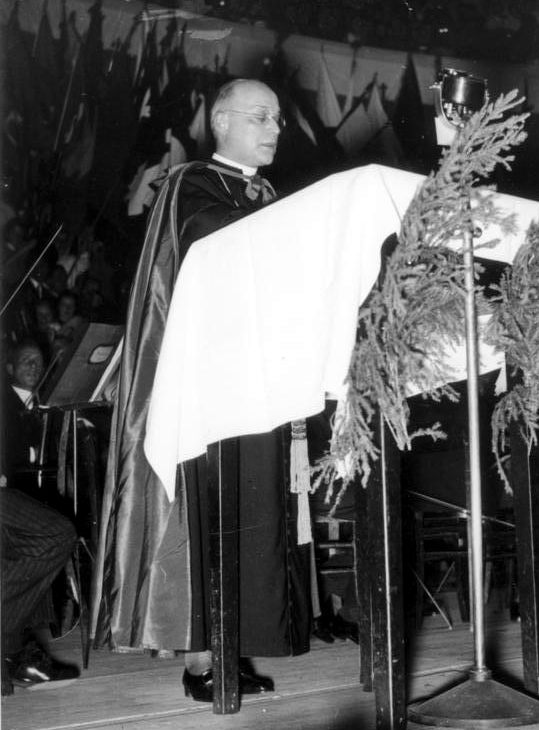
Not all Catholics cooperated with Nazi Germany’s quest to rid the world of the Jewish People. Bishop Konrad von Preysing, Bishop of Berlin, provided aid to the city’s Jews and had links to the German Resistance. (Photo by Bundesarchiv)
Of course, such efforts by the Catholic Church are important, encouraging, and welcome.
Many Pentecostal churches have also made efforts to bring about reconciliation with the Jews, efforts which are indeed necessary.
Believers everywhere must take to heart the ministry of reconciliation and leave no stone unturned in seeking reconciliation between Christians and Jews, between fellow Believers, between family members, and wherever we can bring the Good News of Yeshua.
Still, a true and real reconciliation is required not only between God and each individual, but also the entire world. This will only happen fully when the Messiah returns.
In the words of the disciple John we say, “Amen. Come, Adon Yeshua.” (Revelation 22:20)
In the meantime, may we be found alert and busy doing the Master’s business.




